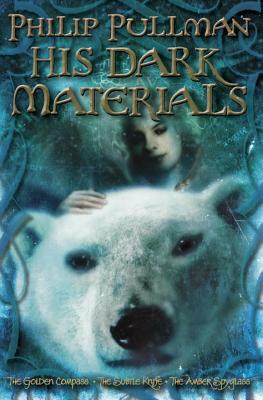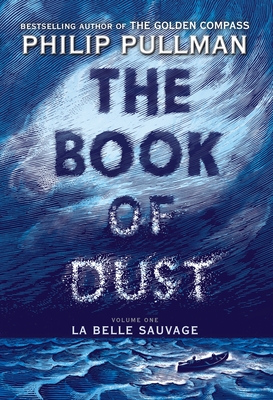 At the center of La Belle Sauvage, the first book in Philip Pullman’s new trilogy, is a quest to reach sanctuary amidst many perils. For any new book the idea of sanctuary may be found in reaching the hands of its intended audience. Booksellers have a role to play in that quest and we tend to divide books into three categories. First, books that will achieve their quest without our help, books that will sell themselves. Second, books that are worthy of sanctuary and which will require our active assistance to get there. Third, books that are doomed, books beyond the aid of publicity, word of mouth or handselling.
At the center of La Belle Sauvage, the first book in Philip Pullman’s new trilogy, is a quest to reach sanctuary amidst many perils. For any new book the idea of sanctuary may be found in reaching the hands of its intended audience. Booksellers have a role to play in that quest and we tend to divide books into three categories. First, books that will achieve their quest without our help, books that will sell themselves. Second, books that are worthy of sanctuary and which will require our active assistance to get there. Third, books that are doomed, books beyond the aid of publicity, word of mouth or handselling.
When the first book of Pullman’s return to the world of The Golden Compass, La Belle Sauvage, was announced I figured that this book was a category one book, and that lovers of His Dark Materials would come streaming in to get it. That did happen in some places around the country but central Maine was not one of them. I was shocked by the lack of interest here. Since, for DDG, the first Book of Dust was not a category one, that meant determining if it was a category two or three, and if a two, how to do my part to aid its quest.
The first job was to read the book myself. Having done so it was immediately apparent that I was dealing with a category two. That determination stemmed from one prime issue. Were we indeed back in the same world as the original trilogy? Returns to well-built worlds do not always happen in truth. The fourth Earthsea book, Tehanu, for example, is not really set in the same world as the first three books. Social allegory has set its teeth in, Ged has been recast as a mens group dropout, Earthsea’s magic is in abeyance except for 10 pages at the end. Not so here. When entering the pages of La Belle Sauvage the reader is instantly transported back to Pullman’s familiar world.
 The questions then became who was the book’s intended audience, could it advisedly be read before The Golden Compass, what was the age range of its appeal, and so forth? La Belle Sauvage, like the preceding His Dark Materials trilogy, is concerned with the tensions between secular and religious epistemology, the role of scholarship in society, the dangers of theocracy, class tensions, and the transition between childhood and adulthood.
The questions then became who was the book’s intended audience, could it advisedly be read before The Golden Compass, what was the age range of its appeal, and so forth? La Belle Sauvage, like the preceding His Dark Materials trilogy, is concerned with the tensions between secular and religious epistemology, the role of scholarship in society, the dangers of theocracy, class tensions, and the transition between childhood and adulthood.
These adult concerns are seen through the eyes of an engaged, interested child on the cusp of adolescence. In the first trilogy Lyra and Will provided that narrative focus and in La Belle Sauvage we are introduced to two strong and engaging young characters in Malcolm and Alice.
The book is an exercise in sympathetic nature and the coming of age. The narrative starts out gently, we see through Malcolm’s eyes, as though paddling at our ease on a river flowing quietly through an adult landscape. Yet a flood has been predicted. When the flood comes it changes the pace of the book to match its tumult. The flood is very much a metaphor for adolescence, sweeping all away on a current which can be steered against at times to different points but is in the end an irresistible force that alters both perspective and the understood norms of nature. Obstacles and dark enchantments surface as Malcolm and Alice embark on their quest in Malcolm’s canoe, “La Belle Sauvage,” having rescued the baby Lyra from the ruined convent where she was being sheltered, and in quest of bringing her to the safety of her father, Lord Asriel.
 Though this quest is action packed, and certainly succeeds in making a convincing and evocative coming of age tale, endearing both Malcolm and Alice to the reader, the tumult of the flood comes across as a bit of an improbable allegory at points. There are many dangers on the quest but there is one central peril. Our heroes are pursued by the antithesis of a healthy coming of age, the dangerous and perverse Bonneville, a cast-out scientist at war with his own persona, a man who beats his own daemon, which takes the shape of a hideous three-legged hyena. Bonneville, a sexual criminal, appears sequentially during their quest, working as a foil for their transition. His pursuit, down the flood, reminded me very much of The Night of the Hunter, the classic film directed by Charles Laughton. Personally I felt that the river before its flood held more intrigue and interest, and I am very much looking forward to the course of things now that sanctuary has been attained and the river will presumably return to its banks. Speaking of which, I have not answered our questions.
Though this quest is action packed, and certainly succeeds in making a convincing and evocative coming of age tale, endearing both Malcolm and Alice to the reader, the tumult of the flood comes across as a bit of an improbable allegory at points. There are many dangers on the quest but there is one central peril. Our heroes are pursued by the antithesis of a healthy coming of age, the dangerous and perverse Bonneville, a cast-out scientist at war with his own persona, a man who beats his own daemon, which takes the shape of a hideous three-legged hyena. Bonneville, a sexual criminal, appears sequentially during their quest, working as a foil for their transition. His pursuit, down the flood, reminded me very much of The Night of the Hunter, the classic film directed by Charles Laughton. Personally I felt that the river before its flood held more intrigue and interest, and I am very much looking forward to the course of things now that sanctuary has been attained and the river will presumably return to its banks. Speaking of which, I have not answered our questions.
Who is the book for? All readers, 12 and up, who are interested in the nature of knowledge, personal integrity, and the underlying precepts of social and political dynamics. The coming of age has the depth and authenticity called for in order that young readers embark successfully on the story. Would I recommend the book to someone who hasn’t read His Dark Materials yet? I would say yes for an adult and no for a young reader. That being settled, it is time to aid the book’s quest in that parallel dimension which is our bookstore.

This is a fabulous look at the book. Love the reference to Night of the Hunter — spot on. Also, the idea of the flood as adolescence. Thanks from a Pullman Super Fan:)
Thanks Monica!
Bookselling triage! Interesting. Thus far, I’ve only experienced Philip Pullman’s stories indirectly, through the ‘GOLDEN COMPASS’ movie, which I enjoyed, despite its variable reviews. But your comparison to ‘THE NIGHT OF THE HUNTER’ alone is enough to sell me on ‘THE BOOK OF DUST’. Thanks for this and I hope your sales strategy succeeds.